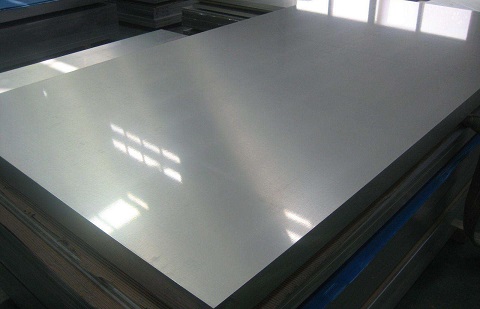Categories
- Pipe & Tube (18)
- Flange & Fitting (97)
- Fastener & Gasket (12)
- Valve & Pump (18)
- Base Material (11)
- Equipment (8)
- Application (30)
- Technical (110)
Traditional austenitic stainless steels such as Type 304 may be sensitized and be subjected to intergranular corrosion. At temperatures above about 1900°F [1040°C], chromium carbides are completely dissolved in traditional austenitic stainless steels. However, when these steels are slowly cooled from these high temperatures or reheated into the range of 425°C to 815°C [800°F to 1500°F], chromium carbides are precipitated at the grain boundaries. These carbides contain more chromium than the matrix does. The precipitation of the carbides the matrix of chromium adjacent to the grain boundary. Although chromium also diffuses back from the carbide to the matrix (austenite), the diffusion rate is comparatively slow at the precipitation temperatures. Therefore, the depleted zone persists, and the steel is sensitized to intergranular corrosion. This sensitization occurs because the depleted zones have higher corrosion rates than the matrix in many environments.
If the traditional austenitic stainless steels are cooled rapidly to below 425°C [800°F], the carbides do not precipitate, and the steels are immune to intergranular corrosion. Reheating the steels to 425°C to 815°C [800°F to 1500°F], as for stress relief, will cause carbide precipitation and sensitivity to intergranular corrosion. The maximum rate of carbide precipitation occurs at about 675°C [1250°F]. Because this is a common temperature for the stress relief of carbon and low alloy steels, care must be exercised in selecting stainless steels to be used in dissimilar-metal joints that are to be stress relived. Welding is the common cause of the sensitization of stainless steels to intergranular corrosion. Although the cooling rates in the weld itself and the base metal immediately adjacent to it are sufficiently high to avoid carbide precipitation, the weld thermal cycle will bring part of the heat-affected zone (HAZ) into the precipitation range. Once the precipitation has occurred, it can be removed by reheating the steel to above 1040 °C (1900 °F) and cooling it rapidly.
Susceptibility to intergranular corrosion in austenitic stainless steels can be avoided by controlling their carbon contents or by adding elements whose carbides are more stable than those of chromium. For most austenitic stainless steels, restricting their carbon contents to 0.03% or less will prevent sensitization during welding and most heat treatment. However, this method is not effective for eliminating sensitization that would result from long-term service exposure at 425 to 815 °C [800 to 1500 °F].

ASTM A240 Type 321 sheets, No. 2B finish (cold rolled, bright finish). Type 321 is a stabilized austenitic stainless steel to avert sensitization at elevated temperatures.
Titanium and niobium form more stable carbides than chromium and are added to stainless steels to form these stable carbides, which remove carbon from solid solution and prevent precipitation of chromium carbides. The most common of these stabilized grades are types 321 and 347. Type 321 contains a minimum of 5 × (C% + N%) titanium, and type 347 a minimum of 8 × C% niobium. Nitrogen must be considered when titanium is used as a stabilizer, not because the precipitation of chromium nitride is a problem in austenitic steels, but because titanium nitride is very stable and it also depletes the titanium added. Titanium will combine with any available nitrogen; therefore, this reaction must be considered when determining the total amount of titanium required to combine with the carbon. The stabilized grades are more resistant to sensitization by long-term exposure at 425 to 815 °C [800 to 1500 °F] than the low-carbon grades are, and the stabilized grades are the preferred materials when service involves exposure at these temperatures. For maximum resistance to intergranular corrosion, these grades are given a stabilizing heat treatment at about 900 °C [1650 °F]. The purpose of the treatment is to remove carbon from solution at temperatures where titanium and niobium carbides are stable but chromium carbides are not. Such treatments prevent the formation of chromium carbide when the steel is exposed to lower temperatures.
| Standard & Grade | Product Form |
|---|---|
| ASTM A479 TP321 ASTM A479 TP347 | bar & shape |
| ASTM A240 TP321 ASTM A240 TP347 | plate, sheet, strip |
| ASTM A249 TP321 ASTM A249 TP347 | welded tube |
| ASTM A213 TP321 ASTM A213 TP347 | seamless tube |
| ASTM A312 TP321 ASTM A312 TP347 | smls/wld pipe |
| ASTM A182 F321 ASTM A182 F347 ASTM A965 F321 ASTM A965 F347 | forging |
| ASTM A376 TP321 ASTM A376 TP347 | seamless pipe |
| ASTM A358 TP321 ASTM A358 TP347 | welded pipe |
| ASTM A403 WP321 ASTM A403 WP347 | smls/wld fitting |
| ASTM A409 TP321 ASTM A409 TP347 | welded pipe |
| ASTM A813 TP321 ASTM A813 TP347 ASTM A814 TP321 ASTM A814 TP347 | welded pipe |
| ASTM A269 TP321 ASTM A269 TP347 | smls/wld tubing |
